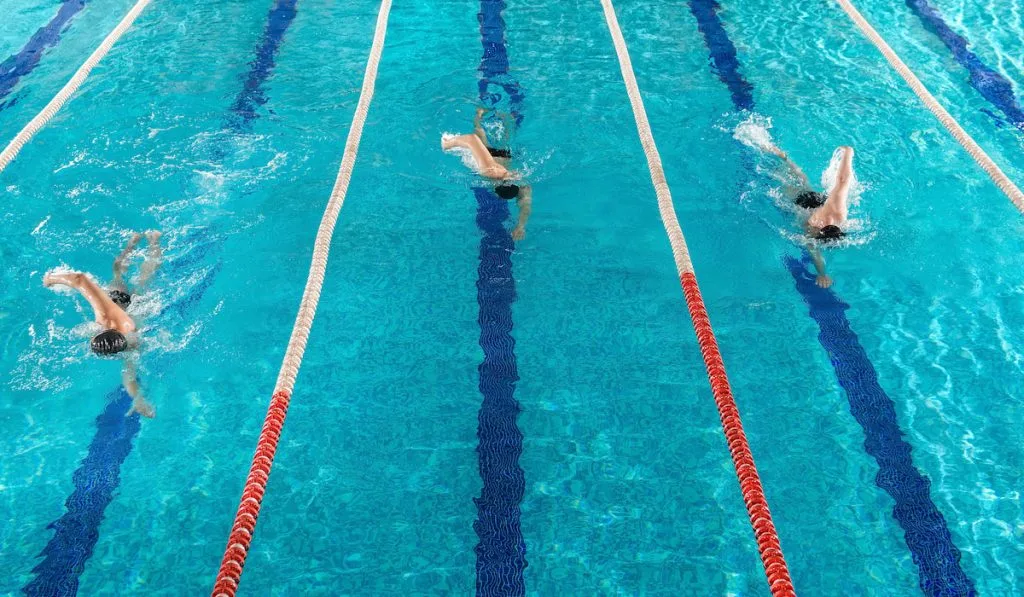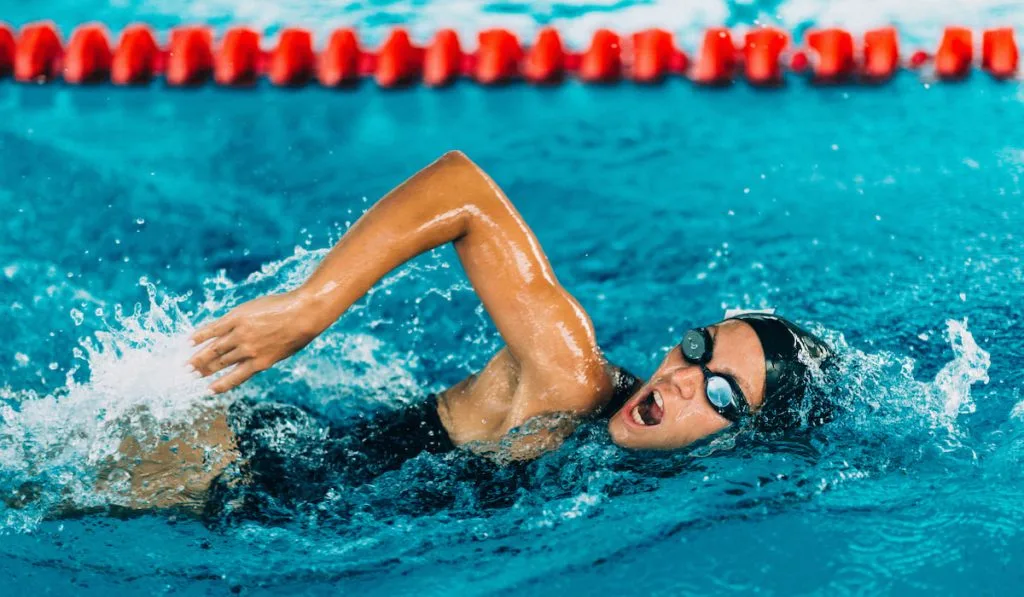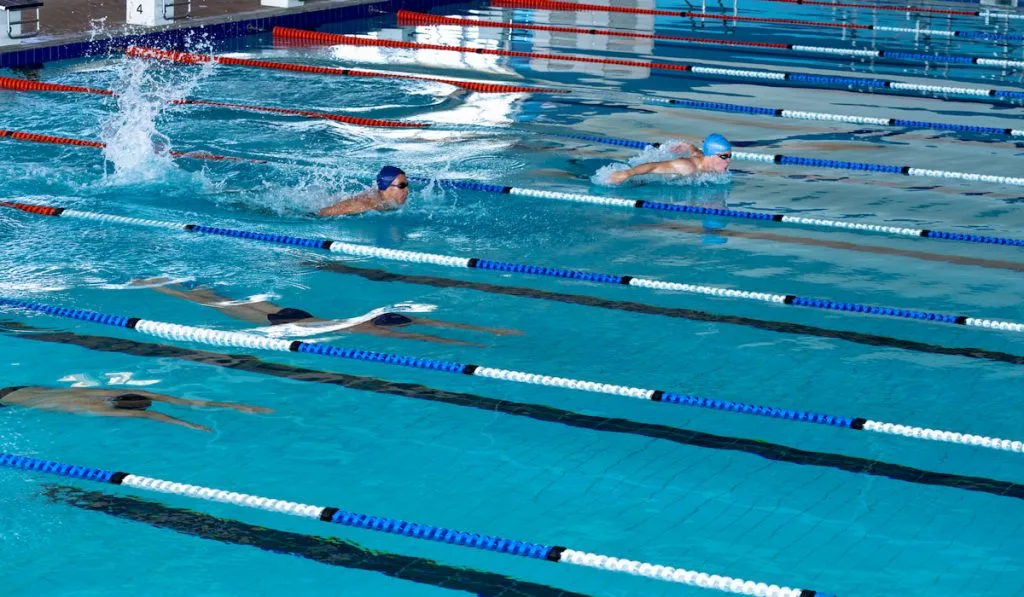For swimmers trying to improve their overall swimming performance, metrics like stroke rate and distance per stroke (DPS) are vital.
Stroke rate gives an indication of a swimmer’s speed, rhythm, and efficiency.
When stroke rate is too low, you may be having excessive glide time between turnovers. In other words, you may be pausing for too long between strokes, and this may be causing you to lose speed.
On the other hand, when stroke rate is too high, your technique may just be chaotic. An excessive stroke rate may also indicate that your strokes are inefficient, and you are losing distance per stroke.
However, conclusions about your swimming performance cannot be drawn from stroke rate alone. Indices like distance per stroke and stroke index must be considered when drawing conclusions about stroke rate.
Now that you’ve had a summary of the importance of stroke rate in swimming, you may be wondering how to calculate it. Not to worry, in this article, we describe how to calculate stroke and discuss other related topics.

How Do You Calculate Strokes per Minute (Stroke Rate)?
Calculating stroke rate is pretty straightforward, but you may need someone else to time you while you swim.
To calculate stroke rate, follow these steps:
- Get someone to time you with a stopwatch while you perform 5 strokes in a pool. If your swimming style involves moving both arms simultaneously, each movement will count as a stroke. However, if the hands do not move together, a stroke is completed when one arm moves.
- After completing the 5 strokes, divide 5 by the time in which you did the strokes.
- If you completed the 5 strokes in seconds, your stroke rate would be in strokes per second. So, to convert from strokes per second to strokes per minute, multiply the stroke rate per second by 60.
For example, if you completed 5 strokes in 15 seconds, your stroke rate per second would be 5 ÷ 15 = 0.33. Then your strokes per minute would be 0.33 x 60 = 19.8 strokes per minute.
Stroke Rate (strokes per minute) =
What Is a Good Stroke per Minute Swimming?
A good stroke per minute in swimming typically varies depending on the terrain.
A stroke per minute rate of around 75 to 100 strokes per minute is generally considered elite in open waters.
On the other hand, in distance pool swimming and age-group triathlon, stroke rates of about 50 to 60 strokes per minute are pretty decent.

How Is Swimming Efficiency Calculated?
Swimming Efficiency may also be called Stroke Index. It can be calculated using the formula below:
Stroke Index = Distance per stroke x Speed x Cycle Multiplier
To calculate speed, multiply your distance per stroke by your stroke rate.
The inclusion of the cycle multiplier in the formula converts distance per stroke to distance per cycle. Cycle multiplier depends on the type of strokes the swimmer uses.
For backstroke and freestyle, 2 strokes equal 1 cycle. So, the cycle multiplier is 2. For butterfly and breaststroke, the cycle multiplier is 1 since 1 stroke equals 1 cycle.
Stroke index gives an indication of how much energy a swimmer uses while racing. If the stroke index is low, swimming is not efficient; the swimmer may be expending more energy than necessary while swimming.
The goal is to increase stroke index. This way, you can use less energy while covering a similar distance or longer distances.
Thankfully, if your stroke index is not good enough yet, you can improve it. To improve your stroke index, you must increase your distance per stroke (DPS) and speed.
When trying to improve DPS and speed, do not work on one metric while abandoning the other. You must find an optimal balance between them or your split time may be affected.
How Many Strokes Does It Take to Swim 25 Meters?
To determine how many strokes it takes to swim a given distance, divide that distance by your DPS.
For instance, if your distance per stroke (DPS) is 1.5 meters, you need 25 ÷ 1.5 strokes to swim 25 meters. In other words, it would take 16.67 strokes (approximately 17 strokes) to swim 25 meters if your DPS is 1.5 meters.
To calculate your DPS, divide the distance you covered by the number of strokes it took you to cover the said distance.
For instance, if you cover 30 meters with 20 strokes, your DPS would be 30 ÷ 20 = 1.5.

How Do I Lower My Stroke Count in Swimming?
To lower your stroke count while swimming, you must improve your stroke length. By increasing your stroke length, you will cover longer distances with each stroke. Consequently, your stroke count will reduce.
Some of the ways to reduce your stroke length are:
- Enter the catch phase early. Early entry into the catch phase makes it possible to propel better with your arm strokes. The more propulsion you get, the better your stroke length.
- You can also improve your pull to create further propulsion while swimming.
One way to increase your pull is to practice sculling. Sculling is a technique that generates propulsion through small, rapid forearm movements.
- Try to finish your stroke at the hips before rolling them back until your arms are totally stretched out.
- Increase the strength in your kicks.
When trying to lower your stroke count, you may use one of the methods described above. Alternatively, you may combine everything.
Resources
- https://swimswam.com/how-to-use-stroke-rate-to-improve-swim-performance/
- https://www.swimmo.com/about/swim-stroke-rate/
- https://livehealthy.chron.com/determine-strokes-per-minute-3630.html
- https://www.triradar.com/training-advice/swim-faster-and-longer/
- https://www.triathlete.com/training/what-is-the-ideal-stroke-rate/
- https://altabrio.com/one-of-the-primary-differences-between-pool-swimming-and-open-water-swimming-is-stroke-rate/
- https://cdn2.hubspot.net/hubfs/3992334/Downloadable%20CTA%20Content/Metrics%20eBook.pdf
- https://blog.tritonwear.com/interpreting-to-improving-stroke-index
- https://www.eatsleepswimcoach.com/developing-swimming-distance-per-stroke/
- https://www.swimtraxx.com/blogs/news/how-to-swim-further-with-fewer-strokes
- https://www.eatsleepswimcoach.com/scount-srate-drills/
